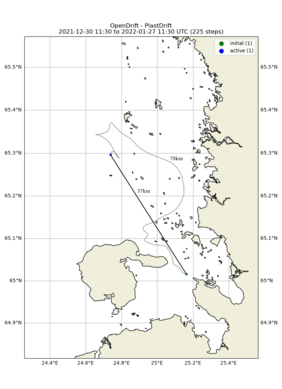We all have been there - you have skipped your lunch, because you have been too busy to have a proper break from your work and to sit down for a warm meal at a cafeteria, at a restaurant or at the coffee room at the office. Instead of that you have bought something from the cafe and you have eaten it while you have continued to work. Or you have grabbed something on the way home from a supermarket and you have had it on the go. Thanks to modern food packaging, we have a wide selection of food items on the store shelves, which can offer immediate relief to our hunger. The packages make them food safe, reliable, shelf-stable and clean, but the downside is that most of these packages are designed to be used only once and they are rarely recycled. This is not good, as single use plastics have been identified as a cause for global environmental pollution crisis. Since the 1950's these have had devastating impacts on our environment - both on land and on water.
As the environmental problems caused by single-use plastics has become more apparent, international organisations, individual countries and even businesses have started to take steps to change the situation. In Europe, about 70% of plastic litter found on the beaches is made up by fishing gear and ten most common single-use plastic items. About half of the items on the "top ten list" are those ones, which can be linked to food industries or are otherwise related to food and beverage consumption, but are not solely produced for these purposes. Plastic straws and stirrers are already being phased out in Europe and elsewhere, but there is still a lot of work to be done to find environmentally friendly, plastic free solutions for food containers and cups for beverages. Whether the packaging is in needed or not, is another way to approach this issue. In France, for instance, plastic packaging of fruits and vegetables has been banned with some exceptions. Another move, if there is no alternative for using single-use plastics, is to increase the recycling rate of these packages. Some supermarkets and shops are also offering "bring your own container" options. We need to change attitudes as well, new technological solutions - whether they are new materials or better recycling systems, etc. - do not work alone. Prevention comes first, recycling is only the second best option. But the least that each of us can do, when we buy products in single-use plastics, is that we bin them, we don't sink them in seas or leave them on the ground.
This incident or case study in our "Plastics in the sea" campaign originates close to Oulu, Northern Finland, where lead partner of POPCORN project - University of Oulu - is located. Oulu is situated by the Bay of Bothnia, which is the most northernmost part of the Baltic Sea. The island of Hailuoto, which is located off the coast of Oulu, is a small island with a population about 1000 people. The island is connected to mainland by ferry, but during wintertime, when the sea is frozen for several months, an ice road is opened from mainland to the island. And beneath this ice, the sea currents are still active, which is highlighted in this case. A plastic wrapper has fallen to the sea on Thursday the 30th of December at 25.1 degrees E and 65.1 degrees N. It has slipped under the fast ice and Norwegian Meteorological Institute will track and trace this hypothetical sandwich wrapper with Open Drift Programme. During the first 28 days, the plastic wrapper has moved towards north, first towards the coast, then further out to the sea. The litter is 37 km away from the point where it fell to the water and has covered under the ice almost 80 km in total.
Next Friday we will return to the Norwegian coast to find out, where the plastic bottle that fell overboard from a Hurtigruten ship has traveled since early January. There have been a couple strong winter storms, where have these storms taken the bottle? We'll return to the journey of our sandwich wrapper on 24th of February, when we will find out, where it has drifted in the meantime.

